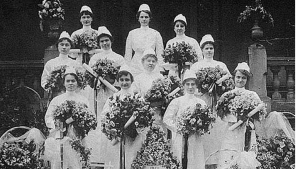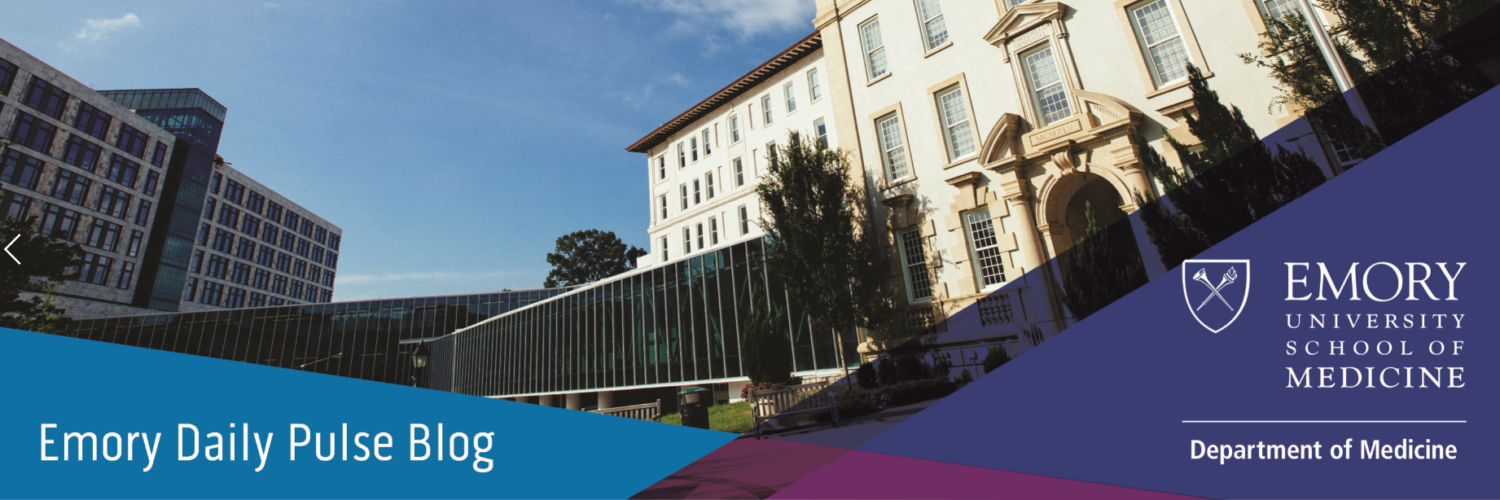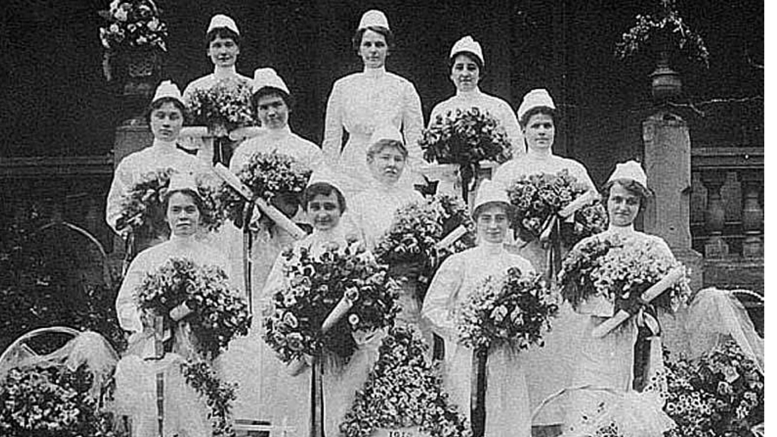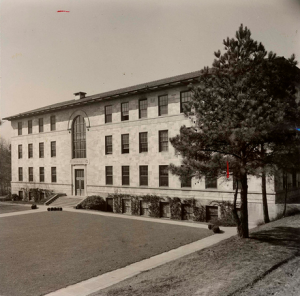
A class of graduating nurses poses outside Wesley Memorial Hospital in Atlanta, later Emory University Hospital, in 1916.
Grady Memorial Hospital opened on June 1, 1892 with 18 employees and 100 beds. The hospital was composed of one operating room and an amphitheater for students and staff. In 1899, the daily cost for a patient was $1.09. Shortly before World War I, the hospital completed the construction of separate white and black hospitals, clinics, nurses’ quarters, and emergency rooms. Because of its separate facilities, the hospital was coined “the Gradies,” a name that would stick until desegregation almost 50 years later.
From 1915 to 1917, the newly formed Emory University School of Medicine was housed across the street from Grady. In 1917, Emory’s founders, including Coca-Cola magnate Asa Candler, endowed the medical school $250,000 to build laboratories for its basic science departments. After the construction of two pink-marble laboratory buildings (Scott and Fishburne), the School of Medicine’s first- and second-year students were moved to Emory’s Druid Hills campus.
Despite having survived the Flexner Report and found a supportive university, Dean W.S. Elkin was concerned that the School of Medicine lacked the resources of some peer institutions. When he expressed the desire for an Emory-owned teaching hospital, Candler arranged for the transfer of Wesley Memorial Hospital—which had been operating out of an antebellum mansion in downtown Atlanta—to the Druid Hills campus.
When construction of the new hospital (now Emory University Hospital) was completed, Emory effectively had a “split campus.” In the years ahead, the School of Medicine expanded rapidly—adding four additional hospitals, a large clinic, and several satellite clinics under its umbrella—but its third- and fourth- year students continued much of their clinical training at Grady.
Related Links/Sources
• The Legacy of Emory at Grady: The Beginning (Pt 1)
• Emory University photo archives
• Emory University School of Medicine
• Emory University Department of Medicine
• Grady Health System
• Jordan Messler’s April 2015 presentation at Medicine Grand Rounds
• A Marriage Made in Atlanta
• Emory at Grady
• Raising the Bar: 150 years of a Medical School in Motion
• Georgia Archives, Vanishing Georgia collection




Be the first to comment on "The Legacy of Emory at Grady: The Early Years"